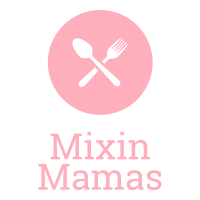Have you ever noticed how there are some cookbooks you refer to again and again, even though you have dozens of others sitting around collecting dust? These “foundation” or cornerstone cookbooks are important because they help define your experience – and overall success – in the kitchen. Cook’s Illustrated: The Science of Good Cooking is one that has taken that spot as a cornerstone cookbook in my kitchen.

Cook’s Illustrated: The Science of Good Cooking
Disclosure: Some of the links in the post below are paid links provided for your convenience. This means that if you purchase something through one of these links, we get a small commission at no added cost to you.
The best cookbooks can help you master the basics and give you the confidence to challenge yourself to reach new levels. At their best, you will find these exemplary collections are more of a culinary master course than a mere collection of interesting recipes.
If you are looking for a new resource like this to add to your collection, you may want to take a look at The Science of Good Cooking, by the editors at America’s Test Kitchen.This impressive collection of culinary know-how serves as an interesting blend of functional cookbook and scientific textbook that promises to show you how to “master 50 simple concepts” in exchange for “a lifetime of success in the kitchen.”
Clearly that’s a pretty bold promise, so let’s take a closer look at how well it delivers on what it sets out to do…
For starters, you should know that The Science of Good Cooking is no lightweight volume of fluffy concepts and ideas. Instead, it weighs in at a robust, information-packed 486 pages.
Throughout those pages, the 50 important cooking concepts mentioned above are brought to life via 400 thoroughly tested recipes that have been “engineered for perfection.” This tome seeks to answer the “Why” behind what works – and what doesn’t – in the kitchen.
To give you an idea of what those 50 simple concepts comprise, here are a few examples:
- High Heat Develops Flavor
- A Covered Pot Doesn’t Need Liquid
- Good Frying is All About Oil Temperature
- Salty Marinades Work Best
- Slicing Changes Garlic & Onion Flavor
The Science of Good Cooking is structured around these 50 concepts, with related recipes woven in to demonstrate how they hold up in real life applications.
Also interspersed throughout the book are detailed “Practical Science” vignettes.
One example reads: “Do Copper Bowls Make a Difference?” The in-depth explanation that follows explores the science behind why eggs whisked in a copper bowl lead to better soufflés. Of course, these in-depth scientific explanations may be too much detail for a lot of people, but they do demonstrate the practical reasons why a lot of popular kitchen lore came to exist.
(By the way, it should be noted that this particular discussion goes on to say that stainless steel bowls produces very good results, as well. So the take away message is “copper is nice, but not critical to your recipes’ success.” ) There, this book just saved you more than its purchase price by showing you why you don’t actually need those expensive, but gorgeous, copper bowls!
But don’t just take my word for it. As of this writing, The Science of Good Cooking has garnered more than 920 reviews on Amazon. Based on those reviews, it has earned a truly impressive 4.8 star ranking (out of 5 possible stars). In fact, a whopping 96% of those who reviewed this book gave it a 4-star (11%) or a 5-star ranking (85%). These results are pretty impressive when you consider these numbers represent nearly 900 individuals who have purchased and reviewed this book.
If all of this sounds interesting, you can take a look at it for yourself here: The Science of Good Cooking
Even so, it is important to know this cookbook is NOT for everybody.
Some who purchased this book were turned off because they felt that the overall tone of the authors was too smug and condescending. In addition, others noted that the text is too small and the book itself is too heavy to be easily handled while working in the kitchen.
Yet another reviewer noted that the Kindle version is actually a stripped down version of the printed copy. I’m not sure if this is, in fact, the case as I only have the hard copy… but it is worth noting if you are considering buying the Kindle version. In the end, the majority of complaints come down to a matter of personal preferences and you’ll need to decide if any of these concerns are deal breakers for you.
However, one complaint that can be objectively verified is the lack of color photos to accompany the recipes. This is absolutely true and represents a valid complaint given that food and cooking are so visually driven. Frankly, this is my biggest gripe about The Science of Good Cooking, but in my opinion, in no way does it negate all the great information it has tucked away inside.
So, if any of this still sounds intriguing, you can check out The Science of Good Cooking for yourself here: The Science of Good Cooking
Let me know what you think!

Leave a Reply